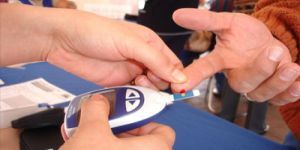Article
Early Puberty Could Help Predict Risk of Diabetes
Author(s):
A new study of more than 30k Swedish men is shedding light on associations between early puberty and risk of T2D.

New research from a team of European investigators suggests age at the onset of puberty could serve as an independent risk factor for type 2 diabetes (T2D).
Results of the study, which was an analysis of more than 30k men from Sweden, indicated individuals with early puberty were twice as likely to develop T2D and age at onset could also predict insulin treatment of T2D.
“These findings strengthen the concept that early puberty is part of an adverse trajectory during childhood and adolescence, and that a high BMI both before and after puberty contributes,” said lead investigator Jenny Kindblom, MD, PhD, associate professor at the University of Gothenburg in Sweden, in a statement.
With an apparent lack of data surrounding association between pubertal timing and T2D, investigators sought to evaluate this association in models accounting for other factors including prepubertal BMI. With this in mind, Kindblom and colleagues conducted an observational analysis of data from 30,697 men in BMI Epidemiology Study (BEST) Gothenburg.
Individuals included in BEST Gothenburg had information including birth weight, height, and weight data available through archived school healthcare records—data on weight and height at 17.5-22 years of age was available through military conscription tests. The primary outcome of interest for the analysis was a diagnosis of T2D, which was identified through the use of ICD codes, and age at puberty was determined by Peak Height Velocity (PHV).
Investigators noted the use of Student’s t-test (unpaired) to compare means, Cox proportional hazards regression to analyze potential associations, and a logistic regression model to analyze the association between exposures and insulin-treated T2D. For the purpose of comparison, the follow-up period was split based at median age of diagnosis (57.2 years) and the periods before and after were defined as early and late T2D diagnosis.
The analysis revealed the mean age at PHV for the cohort was 14.1 (1.1) years and results indicated age at PHV was inversely associated with early (HR 1.28 per year decrease in age at PHV, 95% CI, 1.21-1.36) and late (HR 1.13, 95% CI, 1.06-1.19) T2D. Investigators pointed out early age at PHV appeared to predict insulin treatment of T2D (OR 1.25 per year decrease in age at PHV, 95% CI, 1.17-1.33).
Associations between both groups remained similar even after adjustment for childhood BMI. Conversely, when models were adjusted for both childhood BMI and young adult BMI, there was a significant association for age at PHV and early T2D, but not late. Based on the results of their analyses, investigators concluded the population attributable factor of 15% indicates 15% fewer of those diagnosed with T2D would have developed the disease if not for early pubertal timing.
Kindblom and colleagues point out their study had multiple limitations. Limitations included a lack of generalizability, lack of data such as smoking and familial history of diabetes, and use of records prevented verification of correct classification of the outcome diagnosis.
"Although the mechanisms for the link between early puberty and a higher risk of type 2 diabetes are unclear, it is possible that starting puberty at an earlier age may lead to the accumulation of excess abdominal fat, which in turn increases cardiometabolic risk factors such as high blood pressure, diabetes, and abnormal lipid levels,” Kindblom noted in the aforementioned statement.
This study, “Early puberty and risk for type 2 diabetes in men,” was published in Diabetologia.





